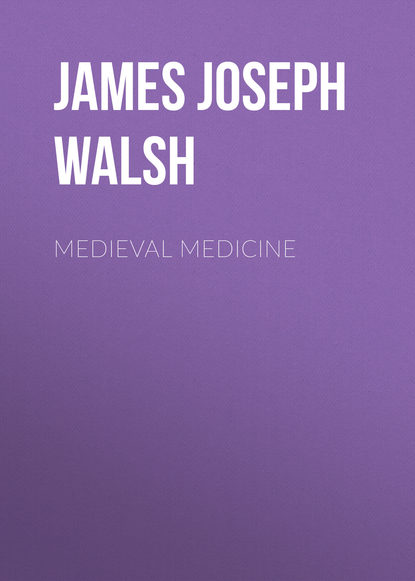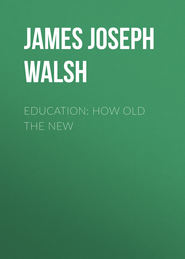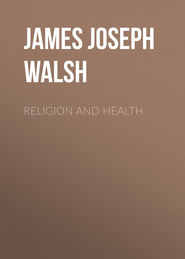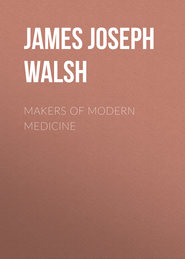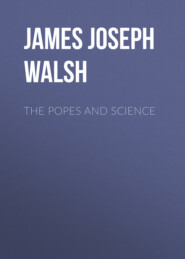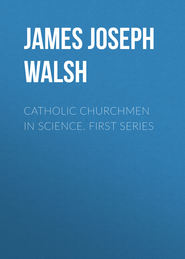По всем вопросам обращайтесь на: info@litportal.ru
(©) 2003-2024.
✖
Medieval Medicine
Настройки чтения
Размер шрифта
Высота строк
Поля
Surgere post epulas; somnum fuge meridianum;
Ne mictum retine, nec comprime fortiter anum;
Hæc bene si serves, tu longo tempore vives.
The Salerne Schoole doth by these lines impart
All health to England’s King, and doth advise
From care his head to keepe, from wrath his harte.
Drink not much wine, sup light, and soone arise.
When meat is gone long sitting breedeth smart;
And after noone still waking keepe your eies,
When mou’d you find your selfe to nature’s need,
Forbeare them not, for that much danger breeds,
Use three physitians still—first Dr. Quiet,
Next Dr. Merry-man, and third Dr. Dyet.
3
Philadelphia: Lippincott, 1871.
4
The Latin lines run thus:
5
English translations of the Regimen were made in 1575, 1607, and 1617. The two latter were printed; the former exists in manuscript in the Library of Corpus Christi College, Oxford. The opening lines of the edition of 1607 deserve to be noted because they are the origin of an expression that has been frequently quoted since.
6
Some of these old medical traditions come down to us from many more centuries than we have any idea of until we begin to trace them. Ordinarily it is presumed that the advice with regard to the taking of small amounts of fluid during meals comes to us from the modern physiologists. In “The Babees Book,” a volume on etiquette for young folks issued in the thirteenth century, there is among other advices, as, for instance, “not to laugh or speak while the mouth is full of meat or drink,” and also “not to pick the teeth with knife or straw or wand or stick at table,” this warning: “While thou holdest meat in mouth beware to drink; that is an unhonest chare; and also physick forbids it quite.” It was “an unhonest chare” because the drinking-cups were used in common, and drinking with meat in the mouth led to their soiling, to the disgust of succeeding drinkers. All the generations ever since have been in slavery to the expression that “physic forbids it quite,” and now we know without good reason.
7
The book called “The Hundred Merry Jests” suggests that the wagtail is light of digestion because it is ever on the wing, and therefore had, as it were, an essential lightness.
8
International Clinics, vol. iii., series 28.
9
“Historical Relations of Medicine and Surgery down to the Sixteenth Century.” London, 1904.
10
The subsequent disuse of anæthesia seems an almost impossible mystery to many, but the practically total oblivion into which the practice fell is incomprehensible. This is emphasized by the fact that while it dropped out of medical tradition, the memory of it remained among the poets, and especially among the dramatists. Shakespeare used the tradition in “Romeo and Juliet.” Tom Middleton, in the tragedy of “Women Beware Women” (Act IV., Scene i., 1605), says:
11
“Physicke is so studied and practised with the Egyptians that every disease hath his several physicians, who striveth to excell in healing that one disease and not to be expert in curing many. Whereof it cometh that every corner of that country is full of physicians. Some for the eyes, others for the head, many for the teeth, not a few for the stomach and the inwards.”
12
The Ebers Papyrus shows that special attention was paid to diseases of the eyes, the nose, and throat, and we have traditions of operations upon these from very early times. Conservative surgery of the teeth, and the application of prosthetic dental apparatus, being rather cosmetic than absolutely necessary, might possibly be expected not to have developed until comparatively recent times; but apart from the traditions in Egypt with regard to this speciality, which are rather dubious, we have abundant evidence of the definite development of dentistry from the long ago. The old Etruscans evidently paid considerable attention to prosthetic dentistry, for we have specimens from the Etruscan tombs which show that they did bridge work in gold, supplied artificial teeth, and used many forms of dental apparatus. At Rome the Laws of the Twelve Tables (circa 450 b.c.) forbade the burying of gold with a corpse except such as was fastened to the teeth, showing that the employment of gold in the mouth for dental repair must have been rather common. We have specimens of gold caps for teeth from the early Roman period; and there is even a well-confirmed tradition of the transplantation of teeth, a practice which seems to have been taken up again in the later Middle Ages, and then allowed to lapse once more until our own time.
13
Dr. Petells, discussing this use of livers (Janus, 1898), says that there has been some tendency to revert to the idea of biliary principles as of value in external eye diseases.
14
“Gesammelte Abhandlungen aus dem Gebiete der Oeffentliche Medizin,” Hirschwald, Berlin, 1877.
15
See Walsh, “The Thirteenth, Greatest of Centuries,” New York, seventh edition, 1914.
16
Burdett, “Hospitals and Asylums of the World.”
17
London, 1909.
18
To be found in Huillard-Brehollis’ “Diplomatic History of Frederick II. with Documents” (issued in twelve quarto volumes, Paris, 1851-1861).
19
Under logic at this time was included the study of practically all the subjects that are now included under the term the seven liberal arts. Huxley, in his address before the University of Aberdeen, on the occasion of his inauguration as rector of that university, said: “The scholars (of the early days of the universities, first half of the thirteenth century) studied grammar, rhetoric, arithmetic and geometry, astronomy, theology and music.” He added: “Thus their work, however imperfect and faulty, judged by modern lights, it may have been, brought them face to face with all the leading aspects of the many-sided mind of man. For these studies did really contain, at any rate in embryo—sometimes, it may be, in caricature—what we now call philosophy, mathematical and physical science and art. And I doubt if the curriculum of any modern university shows so clear and generous a comprehension of what is meant by culture as the old trivium and quadrivium does.” Science and Education Essays, p. 197. New York, D. Appleton and Co. 1896.
20
A tarrenus or tarrene in gold was equal to about thirty cents of our money. Money at that time had from ten to fifteen times the purchasing power that it has at the present time. An ordinary workman at this time in England received about four pence a day, which was just the price of a pair of shoes, while a fat goose could be bought for two and a half pence, a sheep for one shilling and two pence, a fat hog for three shillings, and a stall-fed ox for sixteen shillings (Act of Edward III. fixing prices).
21
The University of Perugia had already achieved a European reputation for its Law School, and this Papal document was evidently meant to maintain standards, and keep the new Medical School up to the best criteria of the times. The original Latin of this document, as well as of the Law of Frederick II., may be found in Walsh, “The Popes and Science,” Fordham University Press, New York, 1908. They are quoted directly from the official collection of Papal Bulls.
Ne mictum retine, nec comprime fortiter anum;
Hæc bene si serves, tu longo tempore vives.
The Salerne Schoole doth by these lines impart
All health to England’s King, and doth advise
From care his head to keepe, from wrath his harte.
Drink not much wine, sup light, and soone arise.
When meat is gone long sitting breedeth smart;
And after noone still waking keepe your eies,
When mou’d you find your selfe to nature’s need,
Forbeare them not, for that much danger breeds,
Use three physitians still—first Dr. Quiet,
Next Dr. Merry-man, and third Dr. Dyet.
3
Philadelphia: Lippincott, 1871.
4
The Latin lines run thus:
5
English translations of the Regimen were made in 1575, 1607, and 1617. The two latter were printed; the former exists in manuscript in the Library of Corpus Christi College, Oxford. The opening lines of the edition of 1607 deserve to be noted because they are the origin of an expression that has been frequently quoted since.
6
Some of these old medical traditions come down to us from many more centuries than we have any idea of until we begin to trace them. Ordinarily it is presumed that the advice with regard to the taking of small amounts of fluid during meals comes to us from the modern physiologists. In “The Babees Book,” a volume on etiquette for young folks issued in the thirteenth century, there is among other advices, as, for instance, “not to laugh or speak while the mouth is full of meat or drink,” and also “not to pick the teeth with knife or straw or wand or stick at table,” this warning: “While thou holdest meat in mouth beware to drink; that is an unhonest chare; and also physick forbids it quite.” It was “an unhonest chare” because the drinking-cups were used in common, and drinking with meat in the mouth led to their soiling, to the disgust of succeeding drinkers. All the generations ever since have been in slavery to the expression that “physic forbids it quite,” and now we know without good reason.
7
The book called “The Hundred Merry Jests” suggests that the wagtail is light of digestion because it is ever on the wing, and therefore had, as it were, an essential lightness.
8
International Clinics, vol. iii., series 28.
9
“Historical Relations of Medicine and Surgery down to the Sixteenth Century.” London, 1904.
10
The subsequent disuse of anæthesia seems an almost impossible mystery to many, but the practically total oblivion into which the practice fell is incomprehensible. This is emphasized by the fact that while it dropped out of medical tradition, the memory of it remained among the poets, and especially among the dramatists. Shakespeare used the tradition in “Romeo and Juliet.” Tom Middleton, in the tragedy of “Women Beware Women” (Act IV., Scene i., 1605), says:
11
“Physicke is so studied and practised with the Egyptians that every disease hath his several physicians, who striveth to excell in healing that one disease and not to be expert in curing many. Whereof it cometh that every corner of that country is full of physicians. Some for the eyes, others for the head, many for the teeth, not a few for the stomach and the inwards.”
12
The Ebers Papyrus shows that special attention was paid to diseases of the eyes, the nose, and throat, and we have traditions of operations upon these from very early times. Conservative surgery of the teeth, and the application of prosthetic dental apparatus, being rather cosmetic than absolutely necessary, might possibly be expected not to have developed until comparatively recent times; but apart from the traditions in Egypt with regard to this speciality, which are rather dubious, we have abundant evidence of the definite development of dentistry from the long ago. The old Etruscans evidently paid considerable attention to prosthetic dentistry, for we have specimens from the Etruscan tombs which show that they did bridge work in gold, supplied artificial teeth, and used many forms of dental apparatus. At Rome the Laws of the Twelve Tables (circa 450 b.c.) forbade the burying of gold with a corpse except such as was fastened to the teeth, showing that the employment of gold in the mouth for dental repair must have been rather common. We have specimens of gold caps for teeth from the early Roman period; and there is even a well-confirmed tradition of the transplantation of teeth, a practice which seems to have been taken up again in the later Middle Ages, and then allowed to lapse once more until our own time.
13
Dr. Petells, discussing this use of livers (Janus, 1898), says that there has been some tendency to revert to the idea of biliary principles as of value in external eye diseases.
14
“Gesammelte Abhandlungen aus dem Gebiete der Oeffentliche Medizin,” Hirschwald, Berlin, 1877.
15
See Walsh, “The Thirteenth, Greatest of Centuries,” New York, seventh edition, 1914.
16
Burdett, “Hospitals and Asylums of the World.”
17
London, 1909.
18
To be found in Huillard-Brehollis’ “Diplomatic History of Frederick II. with Documents” (issued in twelve quarto volumes, Paris, 1851-1861).
19
Under logic at this time was included the study of practically all the subjects that are now included under the term the seven liberal arts. Huxley, in his address before the University of Aberdeen, on the occasion of his inauguration as rector of that university, said: “The scholars (of the early days of the universities, first half of the thirteenth century) studied grammar, rhetoric, arithmetic and geometry, astronomy, theology and music.” He added: “Thus their work, however imperfect and faulty, judged by modern lights, it may have been, brought them face to face with all the leading aspects of the many-sided mind of man. For these studies did really contain, at any rate in embryo—sometimes, it may be, in caricature—what we now call philosophy, mathematical and physical science and art. And I doubt if the curriculum of any modern university shows so clear and generous a comprehension of what is meant by culture as the old trivium and quadrivium does.” Science and Education Essays, p. 197. New York, D. Appleton and Co. 1896.
20
A tarrenus or tarrene in gold was equal to about thirty cents of our money. Money at that time had from ten to fifteen times the purchasing power that it has at the present time. An ordinary workman at this time in England received about four pence a day, which was just the price of a pair of shoes, while a fat goose could be bought for two and a half pence, a sheep for one shilling and two pence, a fat hog for three shillings, and a stall-fed ox for sixteen shillings (Act of Edward III. fixing prices).
21
The University of Perugia had already achieved a European reputation for its Law School, and this Papal document was evidently meant to maintain standards, and keep the new Medical School up to the best criteria of the times. The original Latin of this document, as well as of the Law of Frederick II., may be found in Walsh, “The Popes and Science,” Fordham University Press, New York, 1908. They are quoted directly from the official collection of Papal Bulls.





